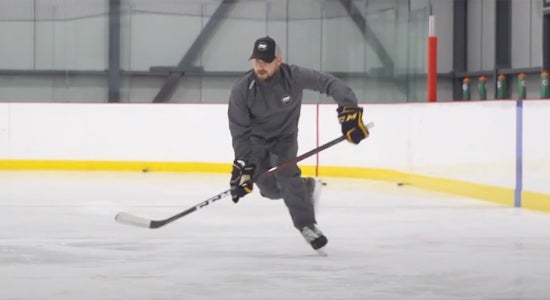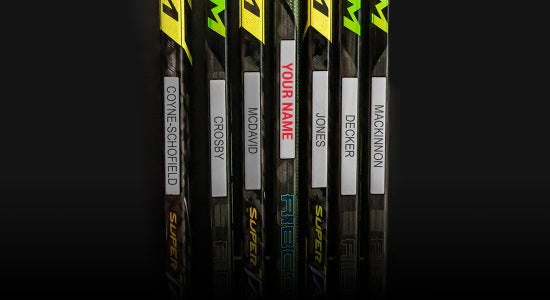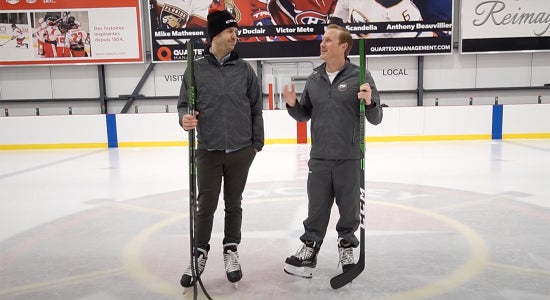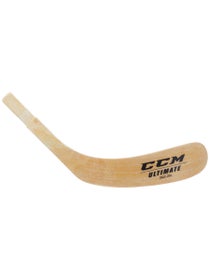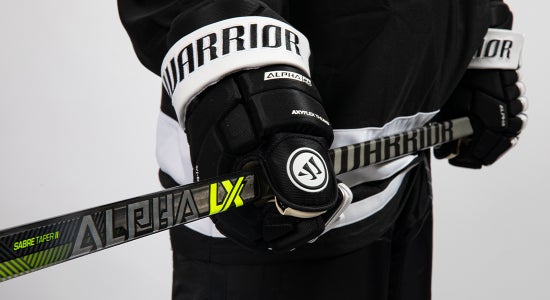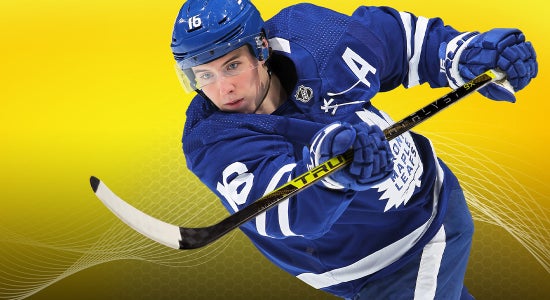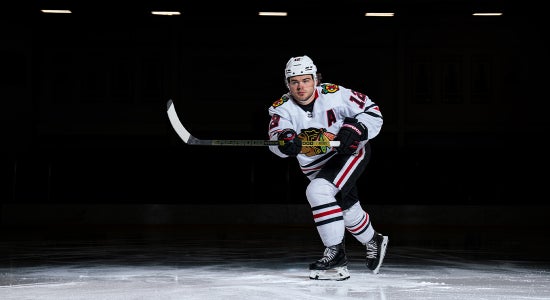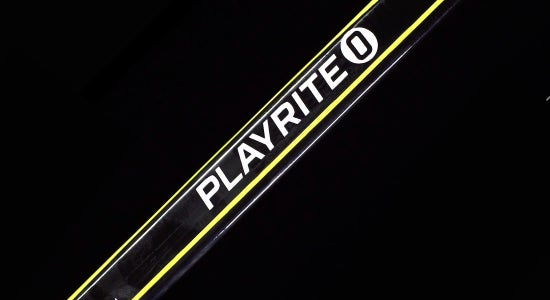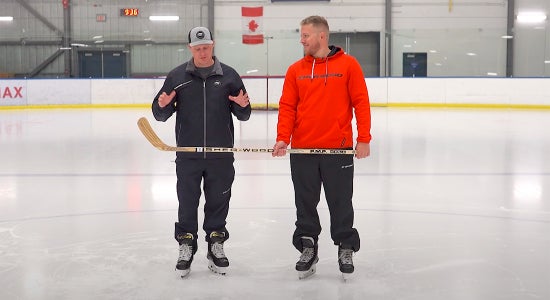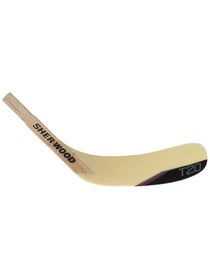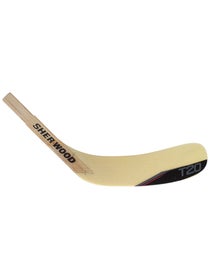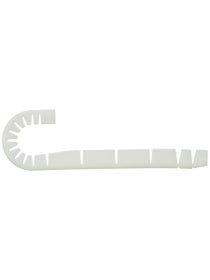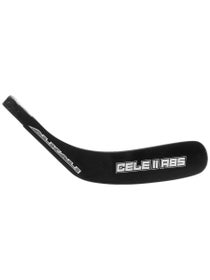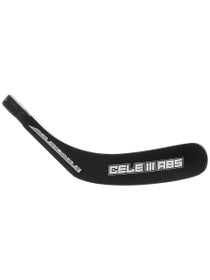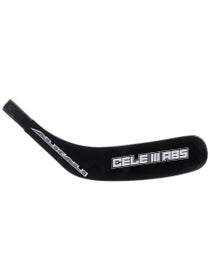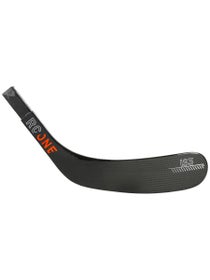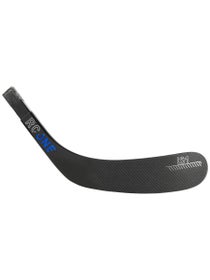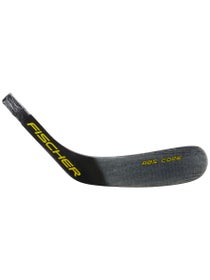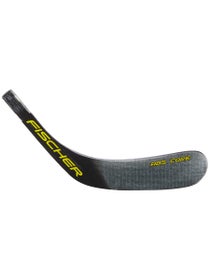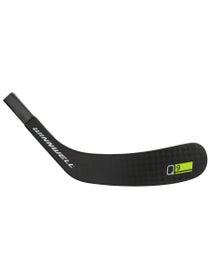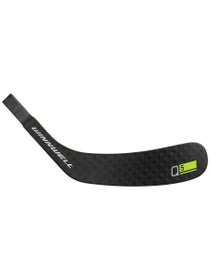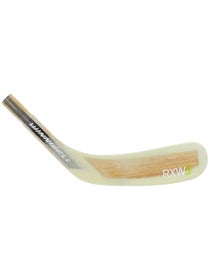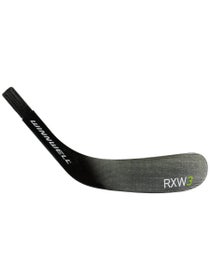HOW TO SELECT A HOCKEY STICK SIZE & FLEX
A stick with the proper length and flex rating compared to a player's height and weight are important factors in shooting, passing, and stickhandling.
HOCKEY STICK HEIGHT
Standing straight up with the stick in front of the body (tip of the blade’s toe touching the ground), the stick should be between your chin and your nose. When on skates, the stick should be around your chin.
The size of a hockey stick has a lot to do with player preference and style of player. Defensemen normally choose to have a longer stick to help with poke checking and getting more power out of their slap shot. Forwards usually want a shorter stick to increase and quicken their ability to handle the puck. Having a shorter stick makes it easier to stickhandle in tight spaces and release quicker shots.
Sticks come at set heights, so not every player can just grab a stick off the shelf and have it be the perfect height. In this case, the stick will either have to be cut down or extended using an end plug.
If the hockey stick is cut down, the stick will increase in stiffness whereas adding a plug softens the stiffness of the shaft. Most composite hockey sticks will have a diagram that will show the new flex rating when the stick is shortened. See below for a more detailed look into selecting the right flex rating.
FLEX RATING
Choosing the right flex rating is crucial to the playing experience since it allows the player to properly shoot and pass the puck. The lower the flex rating, the softer the stick will feel and is more easily bendable. The higher the flex rating, the stiffer the stick will feel and requires more force to bend.
Use this quick method to get an idea of the general flex rating a player should use. Divide their weight (in pounds) by two. So if a player weighs 180lbs, a 90 flex hockey stick is a good starting point but more often than not, using a stick that is 10-15 flex points softer is common practice. In other words, the 180lb player will most likely benefit best from a 75-80 flex stick so that they can properly bend the stick and fully utilize the performance it has to offer. While it might sound cool to use a 100 flex stick, if a player cannot fully load the stick during the shooting process, they are hurting their shot and will not get nearly the same power if they used a more appropriate flex rating.

GENERAL SIZING GUIDELINES
SENIOR HOCKEY STICKS
| Age | 14+ |
|---|---|
| Height | 5'6"+ |
| Weight | 120 lbs+ |
| Stick Length | 58" - 63" |
| Available Flexes | 60 - 110 |
INTERMEDIATE HOCKEY STICKS
| Age | 11 - 16 |
|---|---|
| Height | 4'6" - 5'3" |
| Weight | 120 - 160 lbs |
| Stick Length | 55" - 57" |
| Available Flexes | 55 - 75 |
JUNIOR HOCKEY STICKS
| Age | 6 - 12 |
|---|---|
| Height | 3'9" - 4'9" |
| Weight | 50 - 120 lbs |
| Stick Length | 50" - 54" |
| Available Flexes | 30 - 50 |
YOUTH HOCKEY STICKS
| Age | Up to 7 |
|---|---|
| Height | Up to 4' |
| Weight | Up to 60 lbs |
| Stick Length | 43" - 46" |
| Available Flexes | 20 - 45 |












